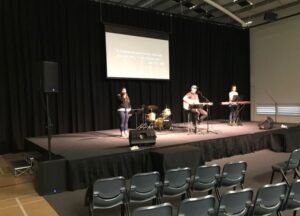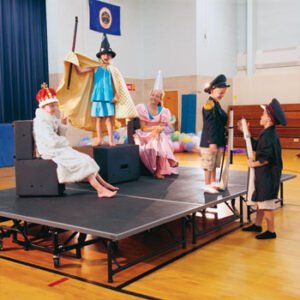How to Set Up a Portable Stage in Under 30 Minutes

In the events world, time is gold—and setup time is often the tightest window of all. Whether you’re organizing a school performance, church gathering, conference, or concert, knowing how to set up a portable stage in under 30 minutes is a game-changer. A fast setup doesn’t mean cutting corners—it means working smarter with the right tools, techniques, and team.
In this article, we’ll walk you through the essential steps, gear, and tips you need to efficiently assemble a stage without stress—while meeting all UK safety standards.
Why Speed Matters in Stage Setup
Before we get into the step-by-step guide, let’s highlight why a fast stage setup is so important:
- Tight event schedules with back-to-back activities
- Venue time restrictions or rental limitations
- Labour cost savings by reducing crew hours
- Less stress for organizers and performers
Our experts at Nexgen Staging Limited have helped hundreds of clients across the UK achieve 30-minute setups—and now you can too.
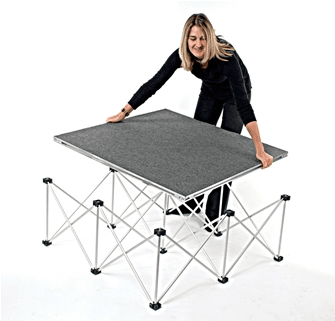
Step 1: Choose the Right Stage System (Pre-Event Planning)
Not all portable stages are created equal. The key to a quick setup lies in selecting a stage that is:
- Modular (easy to expand or shrink)
- Tool-free (uses locking mechanisms instead of bolts)
- Lightweight yet strong (typically aluminium frame)
- Interlocking decks (snap-together with minimal effort)
✅ Recommended: Aluminium framed stage decks with telescopic or folding legs.
Also, ensure the system includes:
- Corner pieces
- Safety rails
- Steps (if elevated)
- Storage trolleys
Pre-planning your stage layout using diagrams will eliminate confusion and speed up your workflow.
Step 2: Lay Out and Mark the Area (Time: 3–5 Minutes)
Time-saving starts with proper site preparation. Here’s what to do:
- Clear the area of obstacles, cables, or debris.
- Mark out the stage footprint with tape or chalk.
- Organize stage parts by type (legs, platforms, accessories).
- Double-check measurements using a tape measure.
🎯 Pro Tip: Use a printed layout guide to show crew members where each section goes.
Step 3: Start with Legs or Frames (Time: 5–7 Minutes)
Depending on your staging system, the first part you’ll install is either:
- Legs: Usually telescopic or fixed height
- Integrated folding frames: For all-in-one stages
Instructions:
- Set leg heights uniformly before attaching decks.
- Place legs upright on your marked points.
- Use height indicators to ensure an even platform.
🛠 No tools? No problem. Many modern stage systems come with clamp-lock or push-button leg systems.
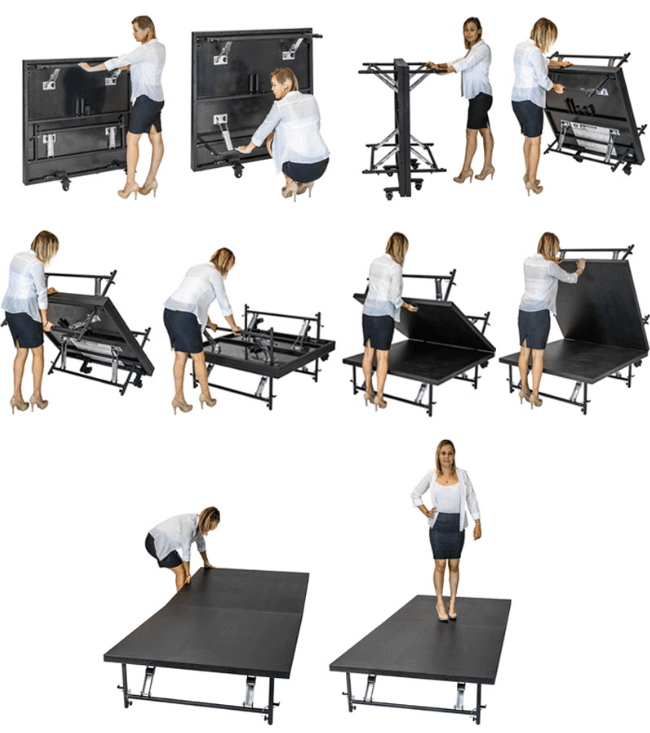
Step 4: Secure the Deck Panels (Time: 7–10 Minutes)
Now that your base is ready, it’s time to connect your stage decks:
- Lift each platform and align it with the leg fixtures.
- Slide or lock into place—depending on the connector type.
- Use quick-release latches or cams to secure platforms.
- Check for stability after every two panels.
⚠️ Safety First: Make sure each panel clicks into place fully to avoid platform movement during the event.
Step 5: Add Safety Features (Time: 5 Minutes)
Even with limited time, never skip safety. Here’s what to install:
- Guardrails: Especially if height exceeds 300mm
- Stage Steps: Secure with anti-slip pads and side rails
- Skirting or edging: For a professional look and trip hazard prevention
Install these after the main stage is locked and stable. Many portable stages come with tool-less handrail clamps that save serious time.
Step 6: Final Checks and Walkthrough (Time: 2–3 Minutes)
This step is crucial before you consider the job complete.
Checklist:
✅ Platform connections are tight
✅ Legs are evenly adjusted
✅ Rails and stairs are secured
✅ No visible gaps or instability
✅ Surface is clean and non-slip
Have one person walk across the stage while another observes for movement or noise.
🎯 Bonus: Use a level meter app on your smartphone to check platform balance.
Tools That Save Time in Setup
Want to consistently hit that 30-minute mark? Equip your team with these essentials:
- Stage transport trolley (stack and roll decks)
- Leg storage rack (pre-sorted for faster grabs)
- Clip-on rails and stair units
- LED headlamps (for low-light or evening setups)
- Pre-labeled components for foolproof assembly
Many event pros by Nexgen Staging swear by colour-coding legs and panels based on size.
How Many People Do You Need for a 30-Minute Setup?
For an average 16ft x 12ft stage:
- 2 people: Moderate pace, experienced crew
- 3 people: Ideal for quick setup
- 4+ people: Overkill but excellent for training or beginners
With a clear plan and labeled gear, two people can easily set up a stage under 30 minutes.
Common Mistakes That Waste Time
Avoid these common pitfalls that can derail your 30-minute goal:
❌ Mixing up leg sizes
❌ Forgetting tools for older systems
❌ Poor labeling of stage parts
❌ Not rehearsing the layout beforehand
❌ Skipping safety gear (then having to redo steps)
🎯 Solution: Do a dry run at your warehouse before the real event.
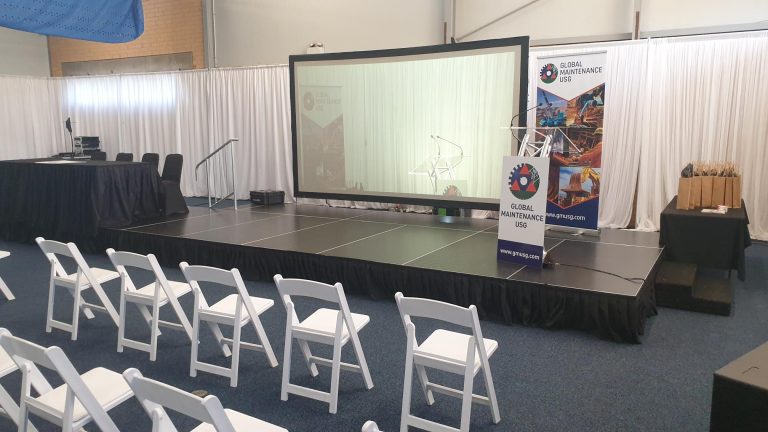
Best Portable Stages for Fast Setup
Some of the quickest-to-assemble stages sold at Nexgen Staging store include:
- QuickLock Modular Stage System
- Fold & Roll Stage Decks
- Lightweight Aluminium Platforms with Telescopic Legs
These come with tool-less locking systems, adjustable heights, and intuitive assembly design.
Real Example: Wedding Venue Setup in 26 Minutes
One of our clients, an event hire company in London, recently set up a 6m x 4m wedding stage using only two crew members in just 26 minutes. They used:
- 12 modular aluminium decks
- Telescopic legs (pre-set to 400mm)
- Clip-on skirting
- Trolley-based transport
The secret? Pre-planned layout and tool-free design. Result? Happy client, stunning photos, zero delays.
Conclusion: 30 Minutes or Less with the Right System
Mastering how to set up a portable stage in under 30 minutes comes down to three things:
- Choosing the right equipment
- Organizing your workflow
- Practicing efficient teamwork
At PortableStage.co.uk, we specialize in time-saving staging systems that are as safe and reliable as they are fast. Whether you’re planning an indoor conference or a school performance, let us help you simplify your setup—so the spotlight shines on the performance, not the stress.
Get Personalized Stage Quotes and follow us on socials for more updates and insights
https://www.facebook.com/nexgenstaging
https://twitter.com/portablestaging
https://www.instagram.com/nexgenportable/
